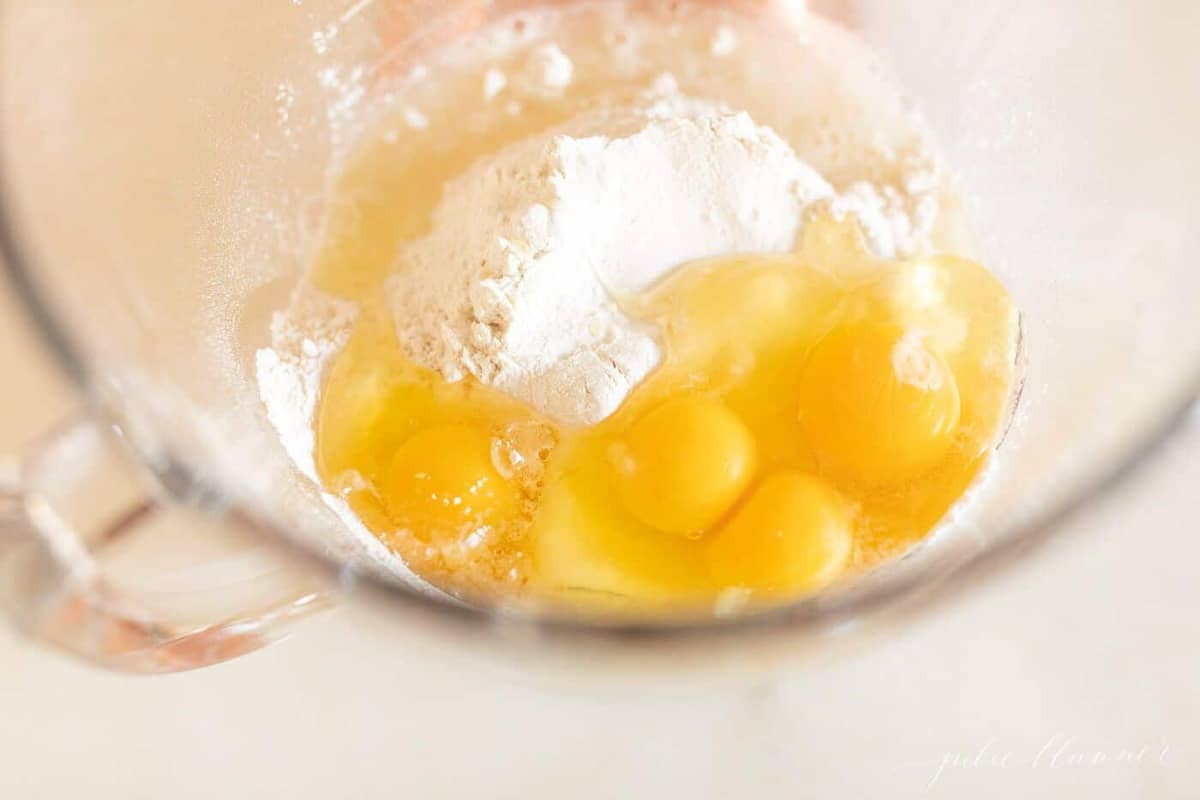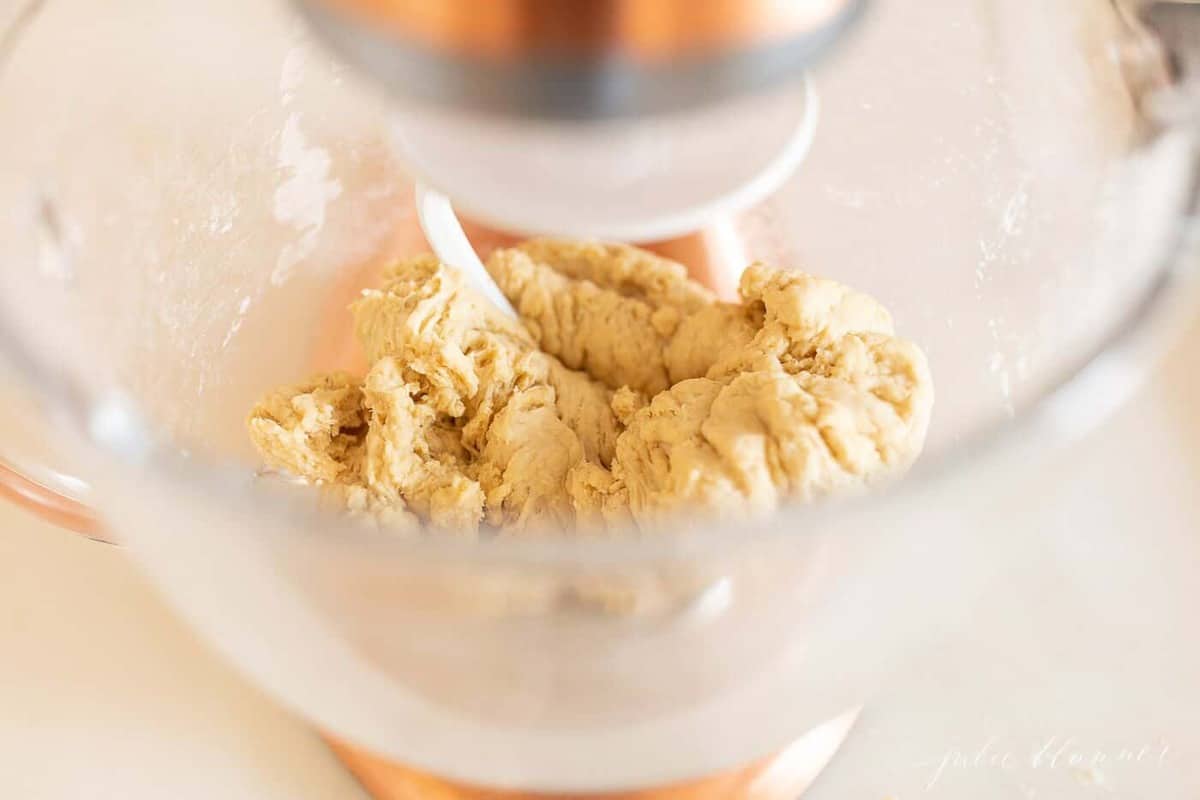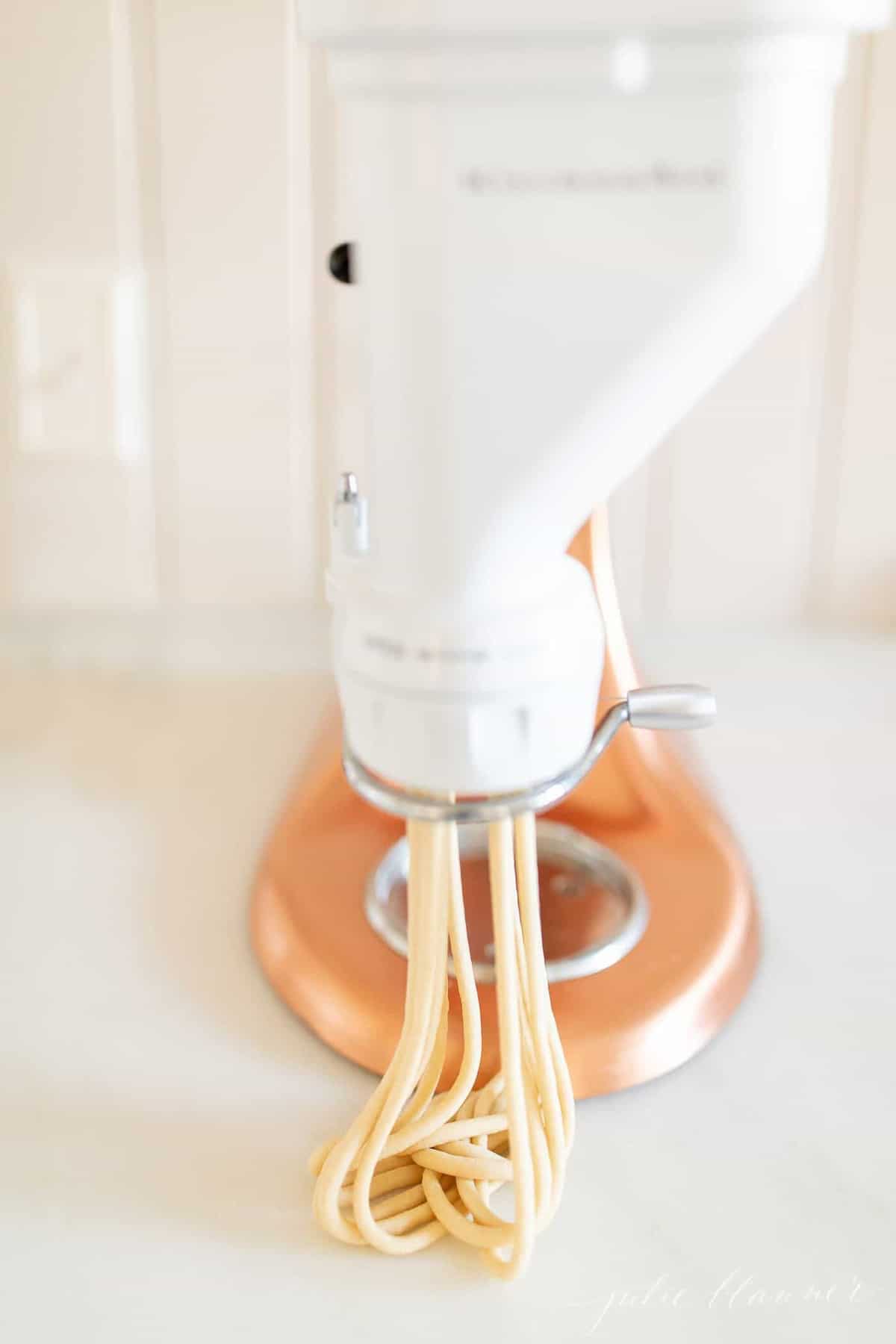Bucatini pasta can only be described as the most deliciously upgraded version of traditional spaghetti. Learn how to make bucatini noodles, where to buy bucatini pasta, and find out which sauces pair beautifully with this hollow pasta shape.
How do you describe bucatini pasta? Initially, I can think of one word: delicious. Bucatini is a traditional Italian pasta that originated in Rome, where it is still served in all types of gorgeous pasta recipes today.
When I first started making pasta at home (find all the details by clicking through), I was admittedly a little intimidated. Once I understood that it was truly such an easy process and so worthwhile for the incredible upgrade in both flavor and texture, our dinners changed for the better.
I love sharing all of our favorite homemade pasta recipes with you. It’s a comfort food like no other! I’ve shown you so many of our favorites, like how to make homemade egg noodles, arugula pasta, or everyone’s favorite one pot carbonara.
Recently I shared an incredibly savory bucatini with Amatriciana Sauce, and I thought this would be a good opportunity to go more in depth about the bucatini noodle itself. Let’s dive in!
The pasta dough is fed into a machine that forces it through a perforated disk, very similar to a meat grinder. The shape of the pasta depends on the shape of the perforations. Bucatini are made with a disk with tiny circular perforations, which forces the pasta dough to emerge in long tubes.

How to Make Easy Bucatini Noodles
- Make Dough – Combine flour, eggs and water with your paddle attachment. You don’t want the dough to be crumbly or sticky…just doughy! Add an additional tablespoon until you reach the desired consistency on speed 4.

- Knead – Using your dough hook, knead for 2 minutes on speed 4.

- Make Bucatini Noodles – With the pasta maker attachment fitted with the bucatini press, Feed the dough through, catching the noodles with your other hand and immediately place into your pot of boiling water. *You have to gauge your dough…if it is too sticky, add a little flour to your hands and recreate dough ball. If it appears to be too dry and not smooth enough, add a touch of water to your hands and recreate dough ball.

- Boil – Boil noodles in your pasta water for just three minutes, until al dente, and drain.

Learn How to Cook Pasta right here, with all my favorite tips and tricks, and How to Reheat Pasta here.
Sauces to Pair With
In my eyes, there’s no better combination of rich tomato flavor and texture than bucatini all’amatriciana. However, pasta sauces of all kinds can pair beautifully with this thick, textural noodle!
You can eat this delicious homemade pasta with something as simple as a little olive oil, romano cheese and a crack of black pepper or Cacio e Pepe.
You can try any of your favorite pasta sauces with your homemade bucatini – in fact, anything that you would serve with a spaghetti noodle works well with homemade bucatini.
While many pasta recipes will call for a particular kind of pasta, it’s fun to mix things up and try new things! Consider the following recipe options to find your new favorite pasta sauce:
Easy trick to extrude FRESH BUCATINI!
FAQ
How are bucatini made?
Why does bucatini have a hole in the middle?
Why is bucatini better than spaghetti?
Is bucatini a Spaghettoni?
Bucatini; the spaghetti with a hole! Bucatini is a type of pasta very similar to spaghettoni, meaning large spaghetti (yes there are thick spaghetti!) However, bucatini have a tiny hole running through them, which some Italians say makes it a great pasta for hearty or creamy sauces as the sauce actually gets inside.
How do you make homemade bucatini?
To make the homemade bucatini, I used the extruder. In doing so, I cut off a small piece of the prepared pasta dough and worked it a little bit so that the small ball of dough had a nice, pliable consistency. Then I popped it into the extruder tube and pushed it through cutting it to my desired length.
How do you cook dried bucatini?
To cook dried or fresh bucatini pasta, bring a large pot of water to boil and add salt to taste. For dried bucatini, add the pasta to the boiling water and stir. Cook for 8 to 12 minutes depending on the brand of pasta and the desired doneness, stirring occasionally to keep the strands from sticking together. Drain well and use immediately.
Where does bucatini come from?
The pasta is traditionally produced and served in and around Rome, with the name originating from the Italian word buco, meaning “hole.” Also known as perciatelli, this pasta is boiled and served hot with tomato, meat, butter, cream, and seafood-based sauces. What Is Bucatini?
